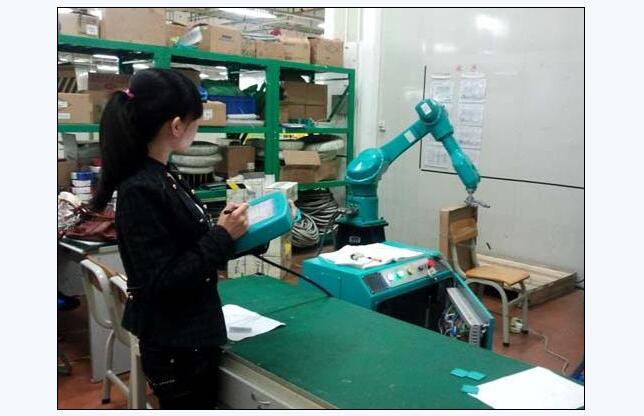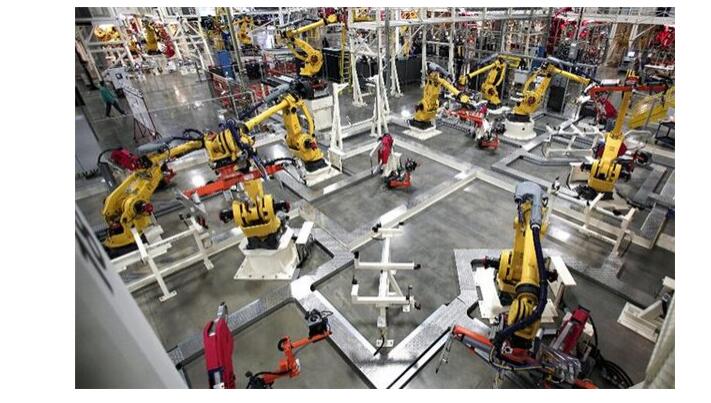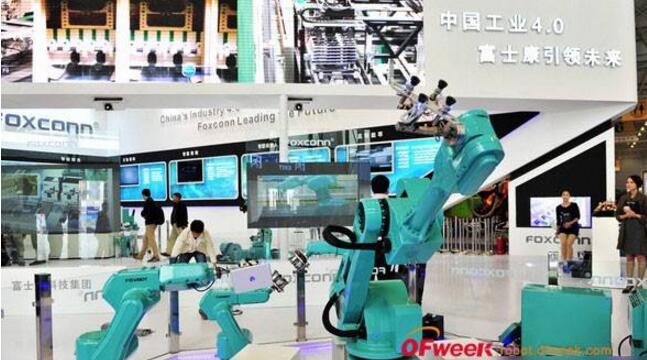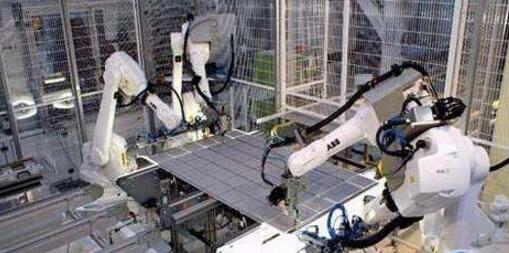Foxbot is a series of robots independently developed by Foxconn. Foxconn opened the Automation Machine Division in Shenzhen in 2007, independently researched and developed core controllers and key components. After completing the development of 15 Foxbot robots in 2009, Foxconn opened a factory in Jincheng, Shanxi Province to mass produce Foxbot robots.
Industrial robots can be roughly classified into six categories according to their functions, and the Foxbot robot has been subdivided into dozens of different functions, which are used in various production tasks such as polishing, painting, assembly, and handling. This series of robots performed very well on some basic tasks, but it still needs to be improved in terms of more flexible fitting work. But it is undeniable that to a certain extent it can be seen as the pillar of the Foxconn factory.

Known as the Foxbot Foxconn robot, the world level of its "intelligence" is about "20s." These robots can work 24 hours a day, with higher endurance.
Robots perform very well on some basic tasks, but we are more advantageous in terms of more sophisticated fitting work. George Zhang, senior chief scientist of industrial robot manufacturer ABB, believes that Foxconn will gradually use machine workers instead of human workers to complete the fitting work, but foreign media slashdot believes that this situation will at least wait until after iPhone6, and human workers are still A cheaper, more practical option.

Currently. Foxbot robots are used in Foxconn for various production tasks such as polishing, painting, assembly, and handling. Greatly improve the production efficiency of the industry.

For a long time, Guo Taiming has been plagued by rising labor costs. In addition, social problems caused by the large number of employees have become one of the headaches of Guo Taiming. As the head of the global foundry empire, Hon Hai's Guo Taiming deeply felt the importance of robots.
As a result, robot projects came into being. According to Guo Taiming, the first batch of robots developed by Foxconn has been put into production in Shanxi Jincheng Park since 2010. In 2011, the robot production capacity of the park will reach 10,000 units.
In addition, a plan for Foxconn's robots has surfaced. "Building a million robots in three years" is the grand goal of Guo Taiming. According to Guo Taiming's prediction, in the future, people will no longer be controlled by machines, but people will control the machine, handing the monotonous and repetitive work to the robot and freeing the employees.
According to information from Foxconn, Foxconn robots are called Foxbot, and the world level of "intelligence" is about "twenty years old." From the case of the robots that have been piloted, the robot can only engage in some simple and repetitive labor, and the price ranges from 140,000 to 160,000 yuan, and the size varies.
Analysts say that the adoption of robots will surely become the trend of the times. The reason is that robots are much more convenient than ordinary employees in terms of cost control and management. At this stage, Foxconn has generally raised the wages of workers. In many places, the monthly salary of workers has reached 3,000 yuan. In addition, Foxconn will also bear a series of additional costs such as dormitory buildings. Therefore, the use of robots has great benefits.
In addition, workers usually use an 8-hour work system, and the biggest advantage of robots is that they can work 24 hours a day. Therefore, in the face of the same work, robots create more value than ordinary workers.
At present, the use of robots is mostly from the perspective of assisting humans, but the biggest challenge in the future is how to add more artificial intelligence. In other words, to enable them to accumulate failed mistakes, learn, reason, and self-correct, and even detect and judge the abnormal state of work at work, immediately respond or send a message to tell humans.
Will robots be smarter than humans, and in turn control humans? This is a constant dialectical issue in many scientific film and scientific circles. Experts say that instead of waiting for the intelligence and computing power of robots to surpass us, it is better to try to strengthen themselves and make humans gradually become superhumans.

With the expansion of the application range of industrial robots, the demand for robots in non-manufacturing industries such as construction, agriculture, mining, disaster relief, defense and military, medical, and daily life is increasing. Therefore, smarter robot technology suitable for application will become a hot research topic in the future. The research trends of robots are as follows:
1) The application fields of industrial robots will be expanded from traditional manufacturing industries such as metallurgy, petroleum, chemistry, shipbuilding, mining, etc. to high-tech fields such as aviation, aerospace, nuclear energy, medicine, biochemistry, etc., and industrial robots will gradually move toward Households, becoming home robots, and some high-risk industries will gradually introduce industrial robots to replace people to perform dangerous tasks such as fire fighting, mine clearance, repairing high-voltage lines, and sewer cleaning. Human life will become increasingly inseparable from industrial robots, which will enrich our cultural life.
2) Industrial robots may have a tendency to become smaller. ABB's small robot "IRBI20" has a weight of only 25 kg, but its working ability is in the leading position in the industry. Its working range is up to 580 mm. The pickup time per kg of material is only 0.58 seconds, and the positioning accuracy is up to 0.Olmm. It is very popular after it is put on the market. Therefore, industrial robots are likely to be miniaturized. Small industrial robots have their advantages. According to the previous ideas, robots are larger than the parts they process. However, with the development of aerospace, aerospace, nuclear power and other technologies, the workpiece size is increasing. The larger the size, the more expensive it is to continue to expand the size of industrial robots, so the industrial robot can be made smaller and processed directly on the workpiece.
3) Industrial robots will have a tendency to combine with newly developed technologies, such as friction stir welding, high-energy laser cutting, gearbox assembly, and sheet metal deformation. Some traditional machining processes are also performed by industrial robots such as laser cutting, laser welding, bonding, deburring, and measurement.
4) Simultaneously reduce the production cost of industrial robots, improve the quality of high-end industrial robots, enhance the flexibility of robots, compete for product reliability, reduce the maintenance cost of the entire life cycle of robots, simplify the installation process of robots, system integration and programming settings. It is the development direction of industrial robots.
Modern Physics Experiment Series
Modern physics experiment related equipment for efficient specialized physics laboratory
Modern Physics Experiment Instruments,Optical Instruments,Acousto-Optic Modulator Experimental Device,Optical Spectroscopy Experiment Determinator
Yuheng Optics Co., Ltd.(Changchun) , https://www.yuhengcoder.com